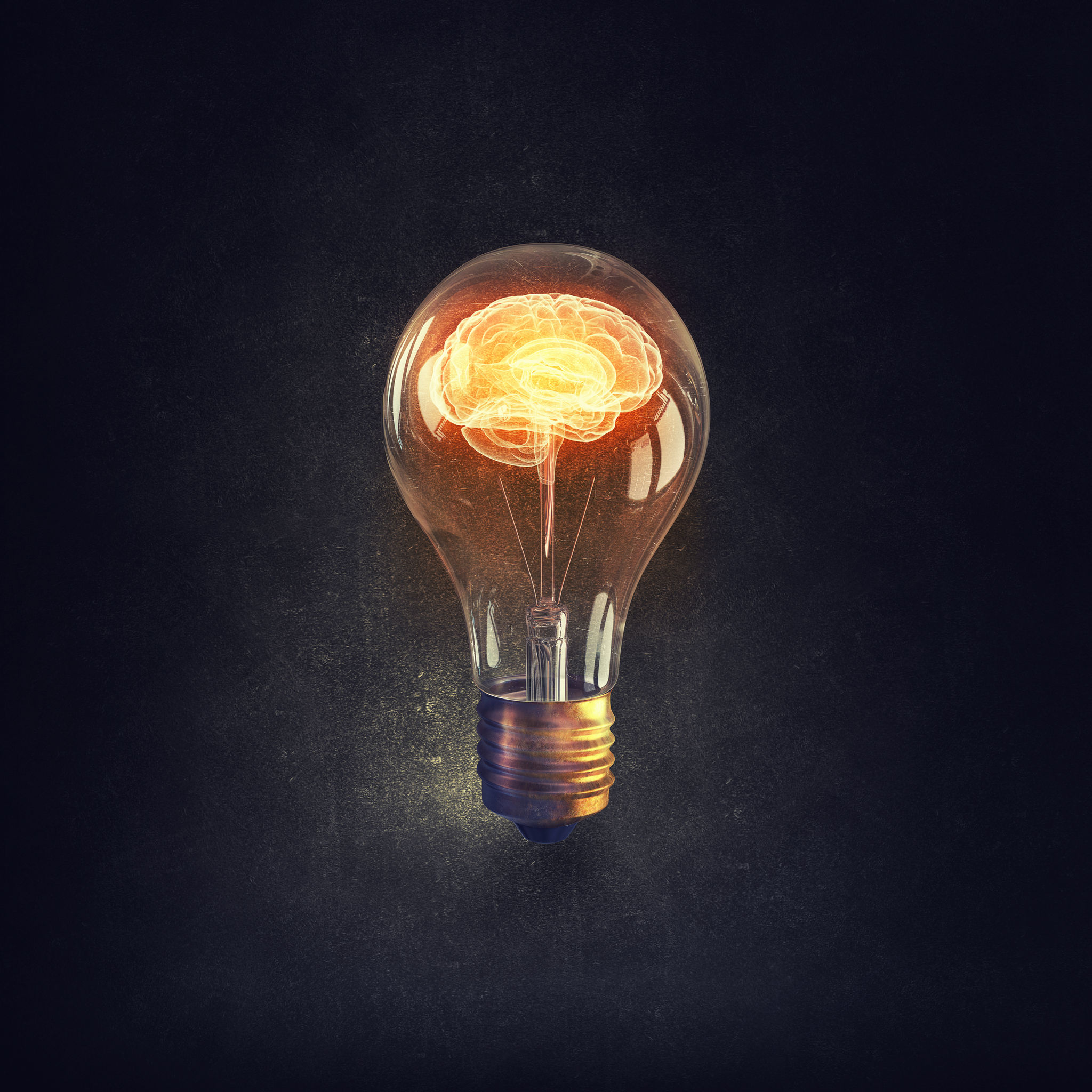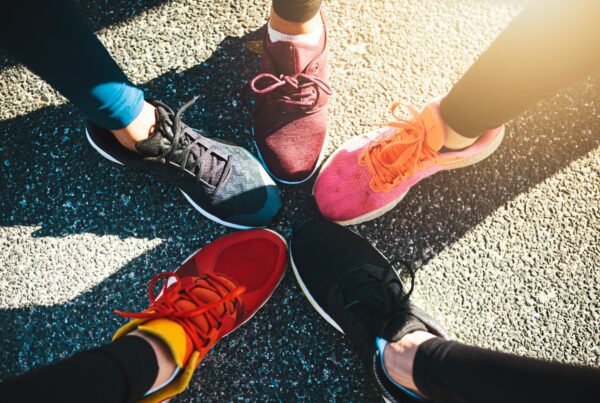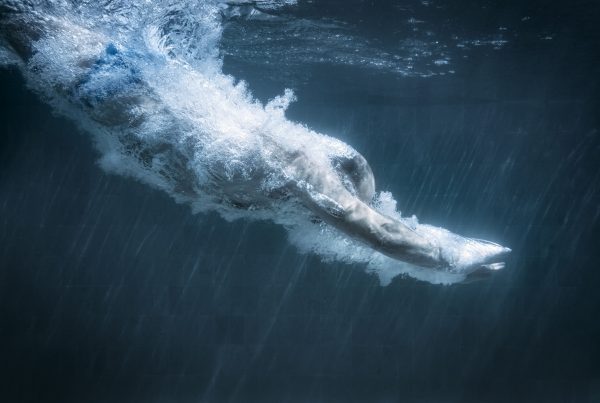”Arizona, is sleep one of the things you're looking to improve in 2022? This week's article takes a look at a study done with the Stanford's men's basketball, that demonstrated the benefits of improved sleep. We hope you enjoy the article and that it helps improve your own sleep hygiene!
Reading Time: 12 Minutes
MWi Hacks:
- Understand how to pay your sleep debt
- Find out why turning your bedroom into a ‘cave’ will support your sleep quality
MWi Summary:
- Negative effects of sleep loss for athletes include slower reaction time, increased perceived exertion, reduced glucose metabolism, and decreased ability to process stress.
- A study with Stanford’s men’s basketball team showed that increased sleep led to statistically significant improvements in performance metrics like shooting accuracy, sprint times, and fatigue.
- Sleep education encourages student-athletes to create better sleep practices.
- Some tips given to student-athletes to help their sleep include having a consistent sleep schedule, sleep in a cave, reserve your bed for sleeping only, and avoiding electronic screens.
- You can determine your “sleep spot” by attempting to get around 9 hours of sleep each night for 4 nights then adjusting by 15 minutes nightly until an optimal level of alertness is achieved throughout the day.
Back in 1954, American writer John Steinbeck said, “It is a common experience that a problem difficult at night is resolved in the morning after the committee of sleep has worked on it.” Sixty years later, those words still ring true.
Whether finishing up a workout plan or a tricky e-mail late at night, we’ve all experienced the cognitive fog that so often accompanies the need for sleep. Situations like this become all the more frustrating when we realize that the task at hand could have been done better and in a fraction of the time if the body wasn’t crying out for rest.
Of course, the same holds true for our athletes. But, for them, the negative effects can be further reaching since lack of sleep may hinder their physical performance, as well as cognitive.
As academic, athletic, and social responsibilities begin to pile up, student-athletes often bump sleep to the bottom of the priority list. I hear it all the time from the athletes we work with at Stanford University: “Once finals are over I’ll sleep,” or “I just need to make it through this week, and then I’ll get back on a healthier sleep schedule.”
However, research shows that putting sleep on the back burner can negatively influence many areas of athletic performance. Here at Stanford, we have come up with a plan to make sleep a priority and help our athletes use it to their competitive advantage.
RESEARCH RESULTS
Since sleep is restorative, an inadequate amount taxes the body in a number of ways. Energy has to be constantly redistributed to keep different parts of the body functional, which leaves other areas basically unattended, sort of like a rolling electrical blackout. As a result, everything slows down.
There has been a lot of research over the years on the negative effects of sleep loss. Studies have shown it leads to:
– Slower reaction time and motor function
– Decreased weight training ability in sub-max and max lifts
– Increased perceived exertion
– Increased risk of injury
– Reduced glucose metabolism
– Increased stress and decreased ability to process stress
– Weight gain
– Increased risk of illness and disease
– Memory impairment.
However, no research had focused on the benefits of increased sleep until 2011, when a study was done right here at the world-renowned Stanford Sleep Disorders Clinic and Research Laboratory. The groundbreaking study was led by Cheri Mah, MS, a Stanford sleep researcher and pioneer in the study of sleep and athletic performance.
For the study, members of our men’s basketball team were asked to maintain their normal sleep schedules for two to four weeks, after which they spent five to seven weeks trying to get 10 hours of sleep nightly. During each period, the players were tested on a number of things, including shooting accuracy, reaction time, sprint times, mood, and fatigue. Not surprisingly, performance measurements saw statistically significant improvements in all areas during the second time period.
WELCOME SANDMAN
Our initiative to enhance the sleep quality of Stanford’s student-athlete population actually predates Mah’s study, as we began it in December 2007. In searching for unexplored components of athletic performance in need of improvement, it occurred to me that most college students eat poorly and don’t get enough sleep. Since we already had nutrition programs in place, optimizing our athletes’ sleep seemed like a logical next step.
I also knew I had help on the subject right in our backyard. My research on the topic started with a simple phone call to Stanford professor William C. Dement, PhD, widely considered to be one of the world’s authorities on sleep and the person who identified the REM stages of sleep. Dr. Dement has been disseminating information about the importance of sleep for some time, often including his mantra, “Drowsiness is red alert,” and the university has been listening. In fact, a number of years ago, the registrar acted on Dr. Dement’s recommendation to push back the start time for all morning classes to 9 a.m.–a requirement that’s still in place today and a boon to our student-athletes in their quest for optimal sleep.
It was through Dr. Dement that I met Mah. We started taking a number of approaches to optimizing sleep in our student-athletes, beginning with education. With an understanding and appreciation for the importance of sleep, athletes are more likely to make the sacrifices necessary to adhere to a healthy sleep schedule in a college environment.
Mah has given a number of “Sleep 101” talks to our teams on the influence of sleep in all aspects of life, including academics and athletics. She also provides strategies for optimizing sleep both at home and on the road and spends a lot of time answering questions from the athletes.
We educate the entire staff on the importance of sleep so they can continually reinforce the message in an informed and consistent manner. We also show sleep tips on the television monitors in the weightroom and athletic training room, as well as supply handouts created by Mah. Here are the strategies we promote to our athletes:
Get enough sleep: Obtaining eight to 10 hours of sleep every night, and not just before a game or competition, is critical.
Be consistent: Establish a consistent sleep schedule by going to bed and waking up at the same time every day. Our bodies like regularity and with a regular sleep schedule, it will naturally start to anticipate sleep. Set a daily alarm on your phone to remind you that you have 30 minutes to wrap up your day and head to bed.
Sleep in a cave: Make your bedroom cave-like–dark, quiet, and cool. Blackout curtains are strongly recommended. Earplugs can minimize noise, and a fan can circulate air while blocking out other noises. A white noise machine may also help. Cooler temperatures are better for sleep, so start at 70 degrees and decrease the temperature a few degrees each night until you find the right temperature for you.
Establish a routine: Develop and stick to a 20- to 30-minute routine before bed. Adopt a practice such as reading or listening to music so that your body knows sleep is near.
Bathroom before bed: Hydrate during the day and minimize liquids one to two hours before you sleep. Use the bathroom before bed to cut down on awakenings.
Avoid electronic screens: Stay away from TV, laptops, and video games one hour before bed. The emitted light can prevent sleep. Download the program f.lux (justgetflux.com), which can help promote sleep by making the color of your computer display adapt to the time of day–warm at night and more like sunlight during the day.
Avoid caffeine and alcohol: Refrain from caffeine after 3 p.m. Alcohol can prevent REM sleep and fragment sleep during the second half of the night.
For sleep only: Reserve your bedroom and bed for sleeping only. Don’t watch TV, eat, or do work in bed.
Leverage power naps: Ten- to 30-minute power naps provide a two- to three-hour boost in alertness and performance. Be cautious of longer naps, which can result in sleep inertia (feelings of grogginess) upon awakening from deep stages of sleep. Eliminate naps if you have difficulty sleeping at night.
Pay your sleep debt: Chronically obtaining less sleep than your body needs builds a sleep debt over time. For optimal functioning and sports performance, you should eliminate your sleep debt by gradually extending your sleep duration, such as increasing from your typical seven hours per night to seven and a half hours for one week, then eight hours per night the following week.
Be patient: Reducing your sleep debt takes more than one night or weekend of good sleep!
SLEEP SPOTS
One of the most important things for student-athletes to do as they work to improve their sleep practices is to determine the optimal amount of rest their body needs each night. We recommend they start by attempting to get nine hours of sleep each night for four nights. Next, they should increase or decrease this amount by 15 minutes nightly until a consistent level of alertness is achieved throughout the day. If this sharpness stays consistent for a week, their sleep requirement, or “sleep spot,” has been discovered.
The amount of sleep required by the average person hovers around the eight-hour mark, which is why it’s become such a common recommendation. However, this number is highly individual and people’s needs vary. Some may need seven and a quarter hours, while others might need nine and a half.
We suggest to our athletes that they seek out their sleep spot during the summer, when their opportunities for sleeping in are likely greater. Ideally, they should focus on finding the number of sleep hours they require to make it through an entire day without experiencing any drowsiness.
Our student-athletes can also determine their sleep spot through participating in sleep studies at the research lab. Prior to participation, most athletes report only needing seven or eight hours of sleep to reach peak functioning, but it’s not uncommon for that number to shoot up to nine or 10 by the end of the study. We very much support athletes’ involvement in these studies, especially considering that the worst-case scenario is they end up getting extra sleep.
Once the sleep spot is established, a sleep schedule can be planned accordingly. This also allows sleep debt to be tracked and tallied. For example, if someone should be getting nine hours of sleep each night but is only getting seven, they accumulate two hours of sleep debt each night. If this happens for five days in a row, 10 hours of sleep debt results. The larger the sleep debt, the greater the chances of falling asleep in the daytime and performing poorly on the field.
We utilize logs we call training monitors to help our athletes get a better sense of the amount and quality of the sleep they are getting and how that affects other areas. In addition to recording their sleep hours, athletes rate their energy, soreness, training motivation, stress, appetite, and overall health. Not only does this tracking increase accountability, it can also validate the athletes’ efforts by providing direct evidence of the impact of sleep on their lives, including their athletic performance.
If we see a trend on the athletes’ training monitors indicating a chronic sleep deficiency, we remind them of the importance of sleep. In some cases, a somewhat more forceful approach is needed. I once sent an athlete back home and to bed when his sleep monitor revealed that he had gotten an average of three hours of sleep each of the previous four days. I was actually afraid that he might get injured in the weightroom.
RESULTS
When asked whether we’ve seen results from the sleep optimization program, I give the same answer as when I’m asked about our nutrition, injury prevention, or exercise protocols: Enhancing performance is a multi-disciplinary approach and the components don’t hold equal weight. It’s the sum of the parts that count.
If we were to remove sleep education from our athletic-enhancement program, I believe it would negatively impact the performance of our athletes, in the same way that removing our nutrition interventions would have an adverse affect. I also believe this to be true of our sports-medicine staff, groundskeepers, equipment managers, coaches, and so on.
While no one involved in the initiative expects the student-athletes to get optimal sleep every night of their college career, we do feel we have a responsibility to educate them on the topic. By exposing them little by little to information relating to sleep, we hope to help them appreciate the benefits that optimum sleep can provide. Only then will they do the work necessary to sleep themselves into better athletes.
MWi would like to thank Brandon Marcello, PHD for his expert insights shared in this article.
To read the original article please follow this link:
http://training-conditioning.com/2014/05/21/lights_out_1/index.php
More on the Author:
For the last 22 years, Dr. Marcello has taken individuals and organizations to the next level through multi-year and time-limited human performance consulting projects in the United States and abroad. His work in conjunction with Draper Laboratories for the U.S. Special Forces has provided a deep, multivariate understanding of the drivers of performance in the battlefield, while projects for professional teams and elite athletes includes performance solutions for nutrition, training, recovery, and high-performance team development.






